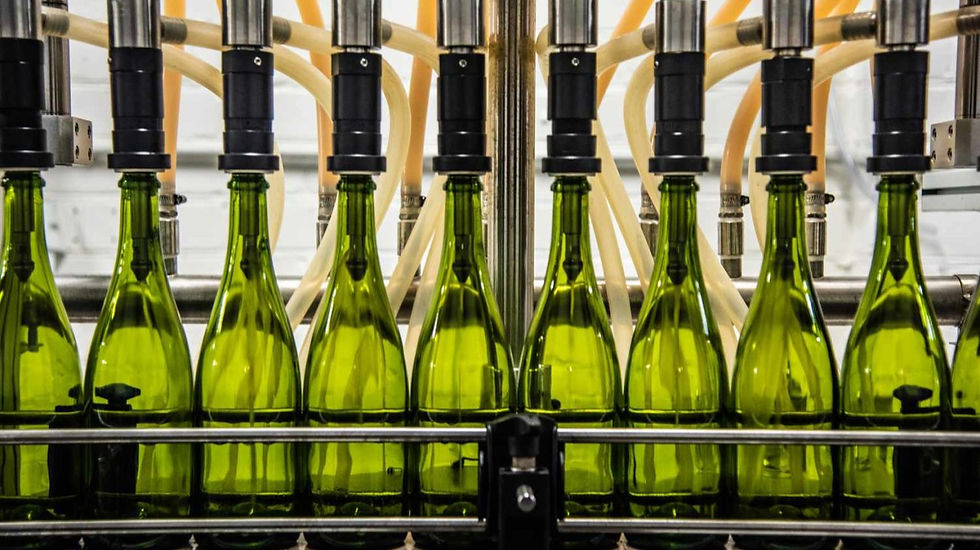How a Misunderstood Winery Tax Credit Can Lead to Massive Liability
- Brewery Compliance Team
- Jul 17
- 3 min read
Imagine you’re the owner of a cozy boutique winery. You’ve built a loyal following with your tasting room pours, your direct to consumer online sales, and a handful of local distribution accounts. Each month you bottle roughly 2,500 gallons of beautifully finished wine, about 30,000 gallons a year, drawn in bond from a larger partner winery. You label every bottle with care, seal it, and send it out into the world.
It feels like you’re doing everything a “producer” does, so when it’s time to file your quarterly TTB Report of Wine Premises Operations, you claim the Small Producer Tax Credit. That drops your federal excise rate from $1.07 to just $0.07 per gallon, saving you $1.00 per bottle. Over 30,000 gallons, that’s a $30,000 credit. Nice, right? Turns out, not so much.

The Hidden Catch: What “Production” Really Means Under TTB regulations (27 CFR 24.2), “production” isn’t measured by how many cases you bottle, label, or pack. It’s defined by where the fermentation happens. If you receive fully fermented wine in bond and simply handle post ferment activities, bottling, labeling, packaging, you haven’t produced it under your own permit. And without on site fermentation, you’re not eligible for the Small Producer Credit. That distinction may sound picky, but it’s the difference between owing $2,100 in excise tax (30,000 gal × $0.07 per gal) and $32,100 (30,000 gal × $1.07 per gal).
The Audit Discovery and the Bill
When the winery hired an outside consultant to review their operations, the winery suddenly faced far more than a $30,000 shortfall:
Underpaid Tax: $1.00 per gal shortfall × 30,000 gal = $30,000
Late Payment Penalty: up to 25 percent of the underpaid tax = 0.25 × $30,000 = $7,500
Interest Charges: approximately 5 percent annual rate, compounded daily; $30,000 × 5 percent × (days late ÷ 365) ≈ $750 for six months
In total, their liability ballooned to $38,250, and if the TTB chose maximum interest or penalty options, the final figure could exceed $40,000, all for an honest misunderstanding.
Why So Harsh? The TTB’s Perspective
Clarity: the law must be applied uniformly, regardless of a winery’s size or intent
Fairness: producers who ferment on site shoulder different costs and risks than those who don’t, so the credit is reserved for true fermenters
Compliance: even honest mistakes jeopardize public revenue collections and cannot be overlooked
Lessons for Every Winery
Trace Every Grape: keep meticulous records of every fermentation batch—dates, volumes, permit numbers, and transfer certificates
Understand Your Workflow: map each step—receiving in bond wine, bottling, labeling, packaging—against TTB definitions before you file
Pre Filing Reviews: use a quarterly checklist or a quick consultation with a compliance advisor to catch errors before they become costly
Amend Early: if you discover a mistake, file corrected returns and pay any shortfall immediately to minimize penalties and interestTurning a Pitfall into a Proactive Approach
By the end of the audit, our hypothetical winery had learned a hard lesson but also gained a blueprint for proactive compliance. Train your team on the nuances of “production,” document every stage of your winemaking process, and schedule regular reviews of your excise returns. With these steps in place, you can confidently claim every dollar of credit you deserve and avoid a potential five figure bill next audit season.
Final note: a winery can transfer its unused Small Producer Tax Credits to another winery, but that is a conversation for another time.



